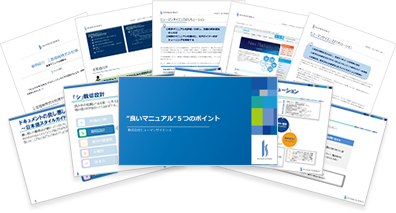
Hello! I am L, a consultant.
I usually handle the creation and improvement of business manuals, and this time I will share the "Successful Methods for Creating Business Manuals." Business manuals are essential tools for sharing company knowledge and standardizing operations. However, it is important not just to create them, but to use them effectively and ensure they are properly established. In this blog, I will explain the steps and key points for creating easy-to-understand manuals, incorporating my experiences and actual examples.
- Table of Contents
1. What is a Clear Business Manual?

The purpose of business manuals varies by company and department, but what is always important is "clarity." To eliminate the personalization of tasks and to smoothly transfer skills, manuals need to be easy to understand and accessible. We often hear from customers that "even though there is a business manual, no one reads it." This is often due to the content being too difficult or the necessary information being hard to find.
To achieve the "clarity" of manuals, there are several key points as follows.
・Clear Structure: Clearly outline the table of contents so that users can quickly access the information they want.
・Concise Language: Avoid jargon and difficult expressions to ensure that everyone can understand.
・Utilization of Visual Elements: Use diagrams, photos, and videos to aid visual understanding.
Download Materials: 5 Points of a Good Manual
Before starting to create a manual, by understanding examples of manual creation from other companies, you can grasp the "key points of creation" and "common challenges" to gain hints for manual creation.
2. Things to Consider Before Creating Business Manuals

When creating business manuals, it is important to first establish a solid plan. An approach of "let's just try making it" will lead to more rework later on, resulting in increased time and effort.
Therefore, here are some items we first address when supporting our clients in manual creation.
Decide on the concept of the manual
Instead of starting to create a manual haphazardly, let's first decide on the concept of the manual. By establishing a clear concept in advance, it becomes less likely for the content to deviate, allowing you to create a manual that meets its purpose.
Specifically, we will consider the following points.
・Main Target: Who will use this manual (new employees, mid-level employees, management, etc.)
・Usage Scenarios: In what situations will the manual be used (at the start of work, during trouble occurrences, regular business checks, etc.)
・Current Issues: What problems currently exist and what do you want to solve with the manual (personalization, delays in work, difficulties in training new employees, etc.)
Decide the schedule for manual creation
The production period for manuals can take several months to over a year, depending on the volume. To avoid getting discouraged along the way, it is important for the person in charge of manual creation to check progress according to the initially planned schedule.
First, consider roughly what will be implemented by when. If the manual is large and varied, think about creating it in stages rather than all at once. During the creation of the manual, it will be necessary to adjust the schedule due to collaboration with other departments and implementation matters, so we will set a rough guideline here.
Specifically, we will consider the following points.
・Milestone Setting: Set completion dates for each chapter and deadlines for inputting information, and regularly check progress.
・Review Timing: Conduct reviews for each completed chapter and allocate time to incorporate feedback.
Role Assignment: Since multiple members are often involved in manual creation, clarifying each person's role ensures a smooth process. By deciding who is responsible for which part, you can prevent task duplication and proceed efficiently.
Consider members involved in manual creation
It is important to involve multiple stakeholders in the manual creation process rather than proceeding alone. Specifically, consider members such as the following:
・Author: The person responsible for writing the manual
・Reviewer: A person with expertise or an actual user
・Feedback provider: Staff who are expected to use the manual
At a minimum, you need a creator and a reviewer. If possible, also secure feedback providers. Based on the concept of the manual, for example, selecting from target users or departments related to the business can help advance the creation in line with the use of the manual.
[Download Materials] How to Create Manuals by Learning from Other Companies' Examples
Before starting to create a manual, by understanding examples of manual creation from other companies, you can grasp the "key points of creation" and "common challenges" to gain hints for manual creation.
3. Steps for Creating Efficient Business Manuals

Once the concept of the manual, the creation schedule, and the involved members are determined, we will finally begin creating the content of the manual. Here, we will introduce the efficient steps for manual creation that our company actually follows.
① Identify the information to be included
② Consider the structure of the manual (table of contents)
③ Decide on the layout and style of the manual
④ Review the manual
1. Identify the information to be included
When creating a manual from scratch, our company uses a "Business Organization Sheet" to organize the information to be included. We create a table in Excel and organize the information along the vertical and horizontal axes.

The vertical axis represents the flow of operations, while the horizontal axis includes details of the operations (procedures), responsible parties (departments), implementation timing, reference materials, and more. When extracting information, we conduct direct interviews with the individuals actually responsible for the operations, and compile the operational procedures based on their experiences and knowledge. This ensures that the content reflects the realities of the operations.
② Consider the structure of the manual (table of contents structure)
Once the information to be included is decided, we will consider the structure of the manual. A common approach is to structure it according to the flow of operations, but there are various methods such as organizing it into beginner and advanced sections, or setting up a separate troubleshooting section. The structure should also be considered based on the concept of the manual (target users and usage).
When the person in charge of creating the manual has completed the table of contents, they will review the entire creation schedule. Taking into account the volume of each chapter, they should reassess and detail the schedule based on factors such as how long it will take to write each chapter, which chapter is most efficient to start with, and whether multiple chapters can be written in parallel.
Determine the layout and style of the manual
One of the factors that makes manuals difficult to understand is "hard to read." The main reasons for this difficulty are the arrangement of information and inconsistency in style. Specifically, attention should be paid to the following points.
・Information Arrangement: The principle of information arrangement is "from overview to details." By presenting the overview or assumptions first and following with the details, readers can smoothly acquire the information.
・Style Consistency: By unifying the style for different types such as titles, procedures, notes, and supplementary information, not only does it enhance readability, but it also improves creation efficiency.
The important point here is that the person in charge of creating the manual should align with stakeholders once the layout and style have been decided. First, create a sample of about 10 pages and obtain agreement on whether it seems acceptable to proceed with the remaining content based on this policy.
After writing the manual based on points ① to ③, a review will be conducted. Request reviews from supervisors and actual users to ensure that there is no excess or deficiency in the information, which will lead to a more polished manual. During the review, the following points will be noted.
Specific feedback: It is important to provide concrete points for improvement rather than just saying "good" or "bad."
Have target users use it: It is also effective to have actual users use the manual and obtain feedback on usability.
3 Approaches Necessary for Manual Creation
We introduce three approaches to manual creation: "Table of Contents Design," "Information Organization for Each Page," and "Writing." Please make use of them.
4. Key Points for Establishing a Business Manual
①Collect feedback and improve
Let's regularly gather feedback from the field where the manuals are used and update them. It is also important to create a channel for receiving feedback and to establish an environment where employees can easily share their opinions.
② Place it in an easily accessible location
Let's upload the manuals to the internal portal site or the cloud so that anyone can easily access them. Enhancing the search function will make it even more effective.
③ Create mechanisms to promote usage
It is also important to establish a habit of using manuals by setting up incentives or conducting internal campaigns. Using them in new employee training and internal study sessions is also effective.
④ Incorporate into Business Flow
By incorporating the use of manuals into the business flow, usage will naturally increase. Let's include checking the manual in the procedures or add it to the checklist.
⑤ Review the content regularly
When business operations or rules change, the manual also needs to be updated. By always reflecting the latest information, its use in the field is promoted.
[Download Materials] Tips for Creating and Establishing Business Manuals from Professionals
We will introduce methods for optimal operation and implementation, as well as case studies from various companies, in the process of creating manuals.
5. Summary
This time, in addition to the steps for creating manuals, we shared points to help facilitate the manual creation process. Business manuals are not just documents; they are the company's "knowledge assets." Let's approach this with a solid plan and an organized approach to maximize the internal knowledge. Additionally, incorporating external insights can broaden your perspective, so please consider it.
Since 1985, Human Science has a proven track record of creating numerous manuals. If you are having trouble with creating operational manuals, please feel free to consult with us. We provide consistent support from problem consultation to the formulation of improvement policies and the creation of customized manuals.
Human Science has a proven track record of creating numerous manuals since 1985. We are truly a professional group in manual creation. We can consistently support you from organizing current issues to formulating improvement policies and creating customized manuals. If you have any concerns about creating business manuals, please feel free to consult with us.
Feature 1: Extensive Manual Production Experience with Large and Global Companies
Human Science has a track record of producing manuals for 243 companies and 3,148 projects, primarily in the manufacturing and IT industries. We have had renowned companies such as "Docomo Technology Inc.", "Yahoo Inc.", and "Yamaha Corporation" as our clients.
Feature ②: Research and Analysis by Experienced Consultants - Output
The creation of business manuals is handled by our experienced consultants at Human Science. Our skilled consultants will propose clearer business manuals based on their extensive experience and the provided materials. Additionally, manual creation is possible even from the stage where no materials are available. The assigned consultant will conduct interviews and create the manuals.
Feature ③: Not only creating manuals, but also providing support for implementation
Human Science is responsible for the important phase of "implementation" after manual creation. For example, even after the manual is created, we will conduct updates and hold manual creation seminars. By implementing various measures, we approach the goal of ensuring that the manuals are established in the field.
Thank you for reading until the end.
I hope this blog serves as a helpful hint for creating easy-to-read manuals.
Tips for Creating and Establishing Business Manuals




























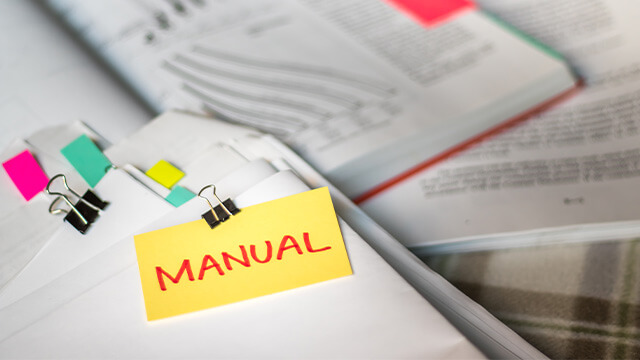






















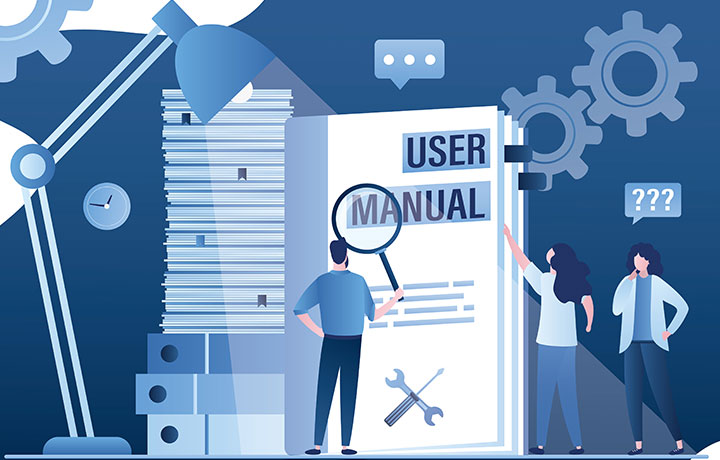







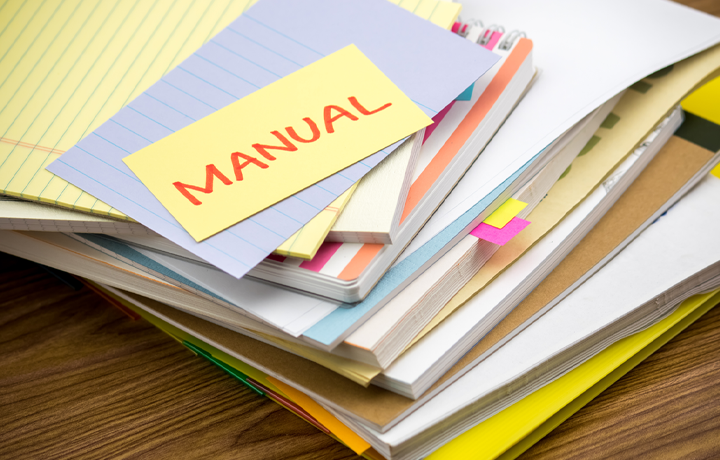

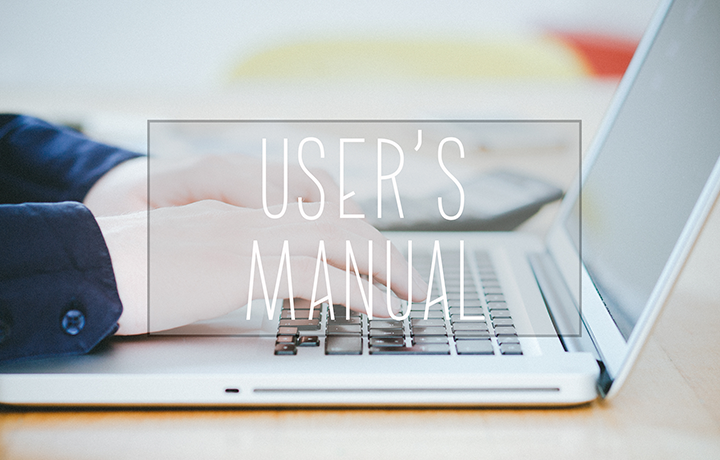











 Manual creation
Manual creation Director, Writer
Director, Writer In-house Support
In-house Support Video
Video Manual
Manual Manual Creation
Manual Creation One-Stop Service for Manual Creation
One-Stop Service for Manual Creation Manuals and Documents
Manuals and Documents